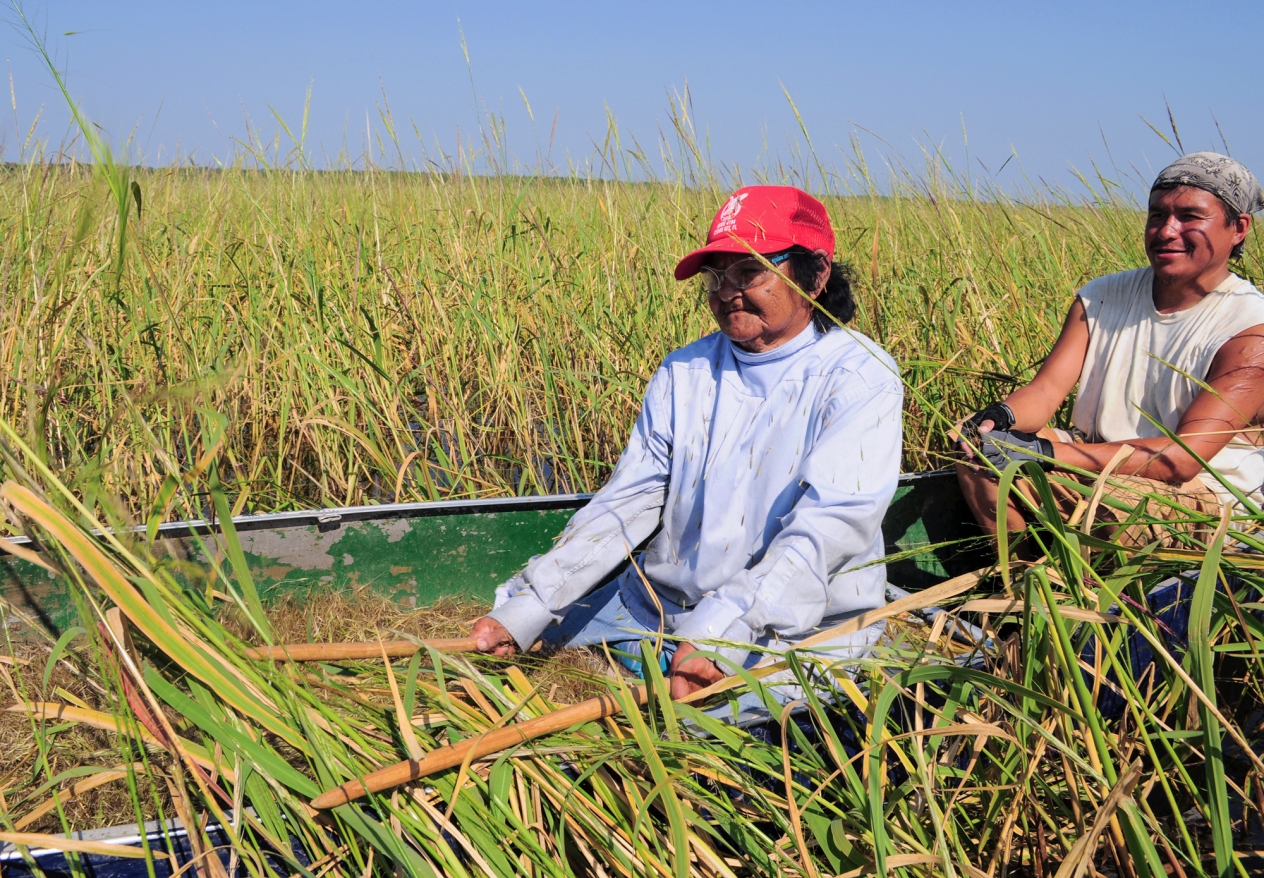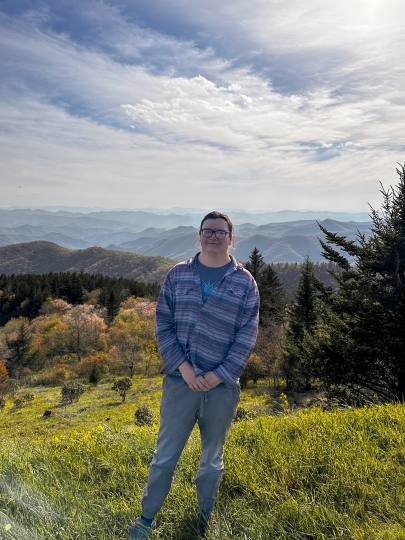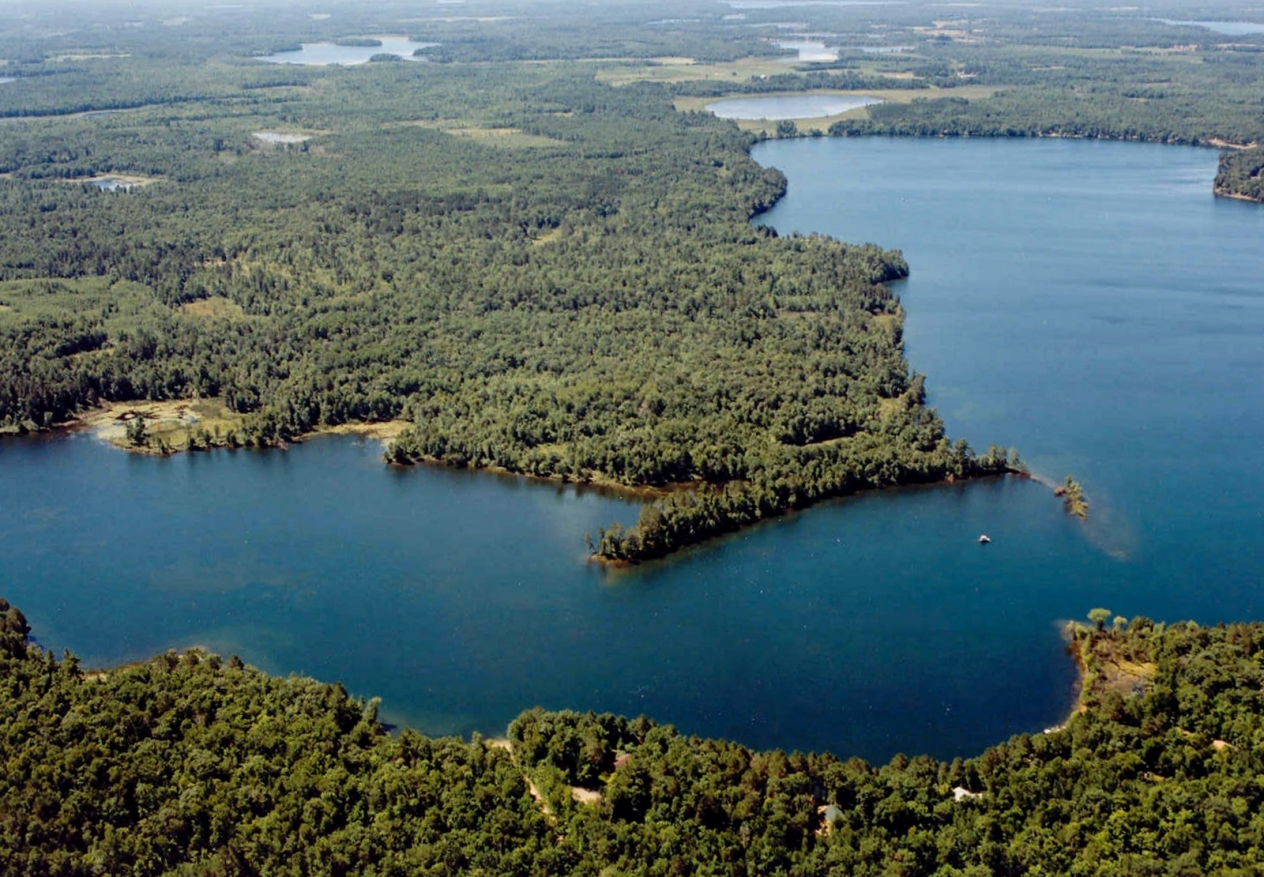
Raining White says he was always taught the importance of water.
“[Water] is integrated so deeply in our ecosystems and our spirituality as Anishinaabe, as stewards of this area that we call home,” he says.
White is a member of the Leech Lake Band of Ojibwe. His parents encouraged him to ask questions about the world around him, and from a young age, he appreciated being near water. This love still fuels him today.

“If I’m traveling, I like to find water and just say hello to it and dip my hands or feet in it and just experience water for what it is,” he says.
In his current work with the Leech Lake Division of Resource Management, these questions help White and his team investigate the invasive species that threaten manoomin, or wild rice, on Leech Lake. Starry stonewort — a macroalgae — is one species of concern, and White and his team monitor the relationship between starry stonewort and manoomin.
“It’s moving in, making these big pillows, and taking over areas where other plants should be,” White says.
White’s team isn’t alone in investigating how to protect manoomin. Leech Lake Tribal College students, in collaboration with the Leech Lake Division of Resource Management, are at work on a research project called Reseeding Manoomin for the Next Seven Generations. They hope to develop a process communities can adopt to protect manoomin from invasive species.
White says time spent on and near water deepens his appreciation of the world around him.
“When you’re on the water around here, you see all sorts of interactions of life, and it gives you a greater appreciation for everything,” he says. “You start to realize all that’s possible because there is water.”
Learn more in the We Are Water MN exhibit
White shared his story as a part of We Are Water MN, a traveling exhibit and community engagement program that explores Minnesotans’ relationships with water. The exhibit next stops at Leech Lake Tribal College’s Bezhigoogahbow Library.

The area around Leech Lake Tribal College occupies two of Minnesota’s most pristine watersheds: the Mississippi River Headwaters Watershed and Leech Lake River Watershed. Surface waters in both watersheds are prized for their recreational value, with tourism being a major driver of local economies. This area boasts high biodiversity in its thousands of acres of forests, surface waters, and wetlands. Continued protection is needed to preserve these watersheds for future generations.
Visit the exhibit to hear local stories and learn more about water in the Cass Lake area from Aug. 15 through Oct. 6 at the Bezhigoogahbow Library at Leech Lake Tribal College, 6945 Little Wolf Rd. NW, Cass Lake, MN 56633. The exhibit is viewable during library hours, from 8 a.m. to 4:30 p.m. Monday through Friday. Admission is free.
About We Are Water MN
We are Water MN is led by the Minnesota Humanities Center in partnership with the Minnesota Pollution Control Agency; the Minnesota Historical Society; the Board of Water and Soil Resources; the Minnesota Departments of Agriculture, Health, and Natural Resources; and University of Minnesota Extension.
The program is funded in part with money from the Clean Water, Land & Legacy Fund — which was created with the vote of the people of Minnesota on Nov. 4, 2008 — and by the National Endowment for the Humanities.